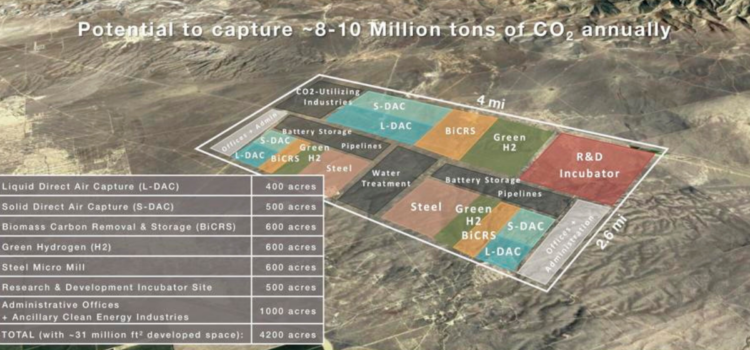
On Tuesday evening, Leadership Counsel for Justice and Accountability hosted a Kern community meeting in partnership with the Central Valley Air Quality (CVAQ) Coalition to discuss the Kern Carbon Management Business Park (CMBP) and the county’s plan for local carbon capture and storage.
The meeting started by discussing Kern County’s air quality and how the community can stay protected against it by staying indoors on bad-pollution days and changing the air filters in both their homes and their cars. During this portion of the meeting Jasmin Martinez, the Coalition Coordinator for CVAQ encouraged people to get involved and to give public comment on valleyair.org.
During this meeting, carbon management was described as the capturing of carbon dioxide from power plants which will then be concentrated into a liquid that gets stored underground in pipes. It was revealed that this process is not only expensive but it also hasn’t been proven to be effective in mitigating any climate change and can still cause harm to the environment and to communities.
In Spring 2022, Kern County was one of the inaugural groups of recipients selected from the Communities Local Energy Action Program (C-LEAP) — a technical assistance grant from the United States Department of Energy.
The purpose of this grant, according to the CMBP website, is to carry out a pre-feasibility assessment of developing a Clean Energy and Carbon Management Business Park within the county, with the aim of informing investors and communities of the opportunities for carbon management, clarifying the costs and benefits in these emerging industries, and providing a roadmap for private sector investment in new and innovative carbon management technologies that are best suited for the region.
The CBMP website states that: “Building a new carbon management site comes with considerable expense—securing land, planning, engineering, permitting and zoning, environmental assessments, and other details will need to be handled before construction even begins. Across all of these carbon management industries, upfront costs range from $278 million to $1.7 billion.”
The Kern County Department of Planning and Natural Resources is leading the project and has developed a hypothetical framework for the CMBP which consists of a 30 million square foot park on 4,000 acres with another 30,000 acres dedicated to solar power. The site would be located in farmland areas, far from urban areas, that are no longer viable for agriculture due to in-state groundwater use policies. An interactive map of the CMBP project is provided at cmbp.kernplanning.com.
Leadership Counsel Regional Policy Manager Emma De La Rosa went on to explain that it isn’t only Kern County and the state’s government pushing for this project and investing money into it, it’s also the federal government and that is due to the current climate crisis.
“The summer is getting worse and there’s actually a tool that shows that the number of days that we will have 90-degree weather or more is between 140 days and 157 days,” De La Rosa stated. “It’s extremely hot and the reason why is because of the continuous emissions we’re seeing. The reason why we’re seeing the federal government invest so much money is because they’re saying ‘Well if we don’t want to see this world expire, we need to reduce emissions.’ However, the concerns are still that these industries aren’t going to be safe for our communities.”
One situation that was brought up during this meeting was a carbon dioxide pipeline in Mississippi that exploded in Satartia in February 2020, causing carbon dioxide to be spewed for four hours. As the carbon dioxide moved through the rural county, more than 200 people had to be evacuated and at least 45 were hospitalized.
Although humans always breathe some carbon dioxide, too much of it causes a lack of oxygen, disorientation, and heart malfunction. And extreme exposures can lead to death by asphyxiation.
In an NPR article written on the Satartia incident, it was stated that: “It quickly became clear that the cloud of carbon dioxide was hampering the emergency response. Combustion engines need oxygen to work, and as the carbon dioxide displaced oxygen in the air, many cars stopped running.”
During the community meeting, De La Rosa also pointed out that if these pipelines are placed next to fault lines that end up being triggered, it could cause the pipeline to burst.